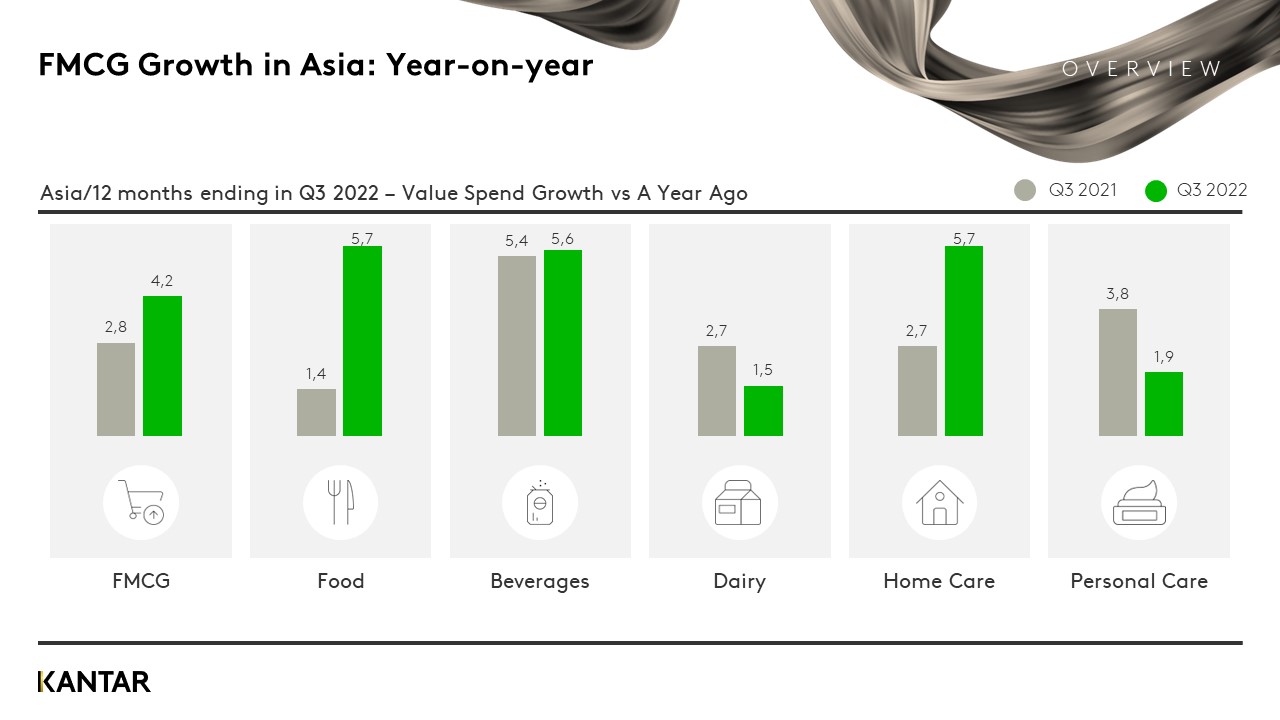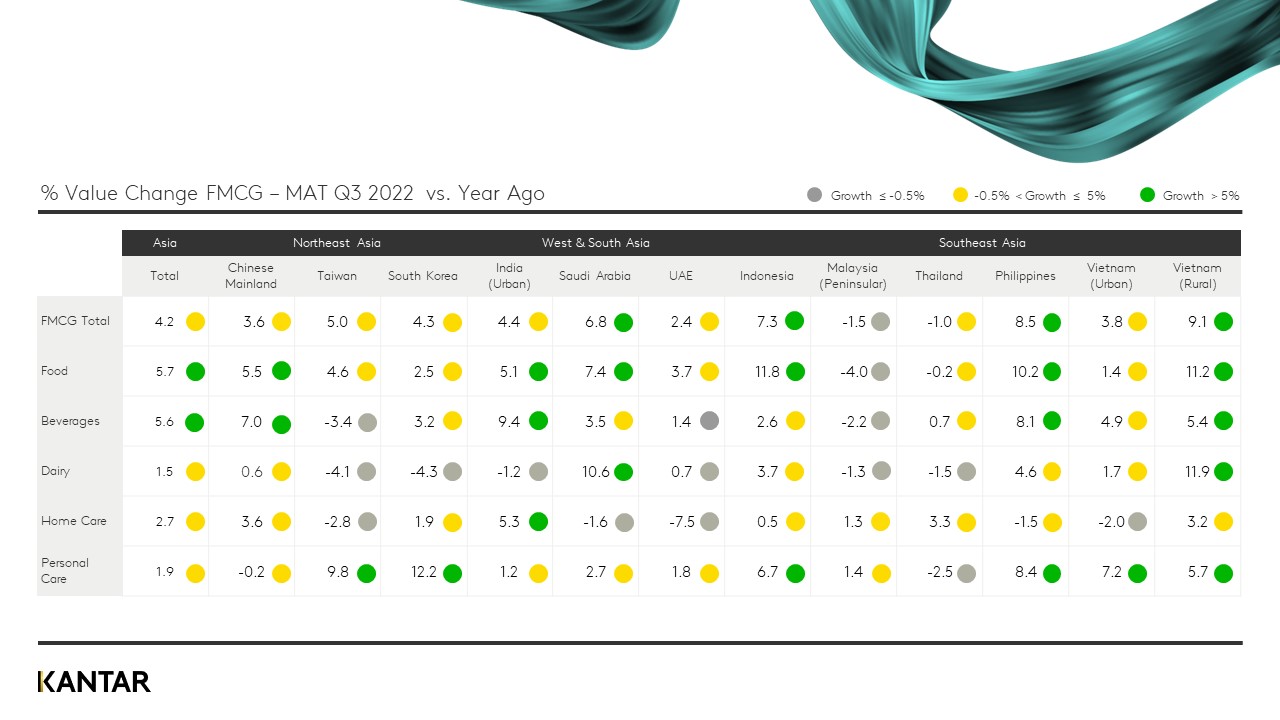As Asian markets continue to survive inflation, FMCG consumers are spending more carefully. Shoppers are feeling the squeeze on their wallets and are using different strategies to adapt depending on the local economic situation where they live.
Asian economies continued to survive in the third quarter of 2022, with some markets enjoying growth. FMCG spending in APAC grew by 4.2%, which is higher than the 3% growth seen during the previous quarter. In Mainland China, Taiwan, India, Indonesia, and Thailand, people are shopping more often in ecommerce, but are spending less each time. T
his latest report brings you the regional picture of in-home FMCG during Q3 2022, as well as highlights from across the eleven key Asian markets.
Asian FMCG market at a glance
- FMCG in Asia grew by 4.2% in Q3 2022, which is higher than the 3% growth seen during the previous quarter.
- Food, beverages, and homecare sectors are driving growth this quarter
- Growth tripled in the food sector due to significant gains across all Asian markets.

FMCG value by markets

- Chinese Mainland
Ecommerce continued to attract more shoppers. It has entered a new stage of development, offering an interface that enables consumers to search for and buy products directly via high-quality content marketing.
- Taiwan
As the pandemic eased, shoppers returned to physical stores and social events more often, which has led to a slight recovery in the cosmetic sector.
- South Korea
The importance of online channels continued to grow, with the value reaching 34.5% across all channels in Q3. The convenience of ecommerce is becoming more widespread, which helped it to become a leading channel, especially in the FMCG market.
- India
Indian shoppers are buying bigger packs and shopping more frequently than before the pandemic. In contrast, the average pack size and spend per trip are declining. This reflects the current inflation situation in the market.
- Indonesia
FMCG growth is currently 7% - the same level as Q3 thanks to the positive impact of Indonesia’s festive season. However, looking at the long-term trend, consumer spending is starting to slow with people shopping less frequently and spending less so it’s becoming more crucial for brands to win during each shopping trip.
- Malaysia
In-home FMCG consumption declined marginally as consumers adjusted their spending habits due to inflationary pressures. The food sector is slowing down, unlike non-food, where consumers are absorbing higher prices and spending more.
- Thailand
Reduced government support combined with high inflation have led to a drop in disposable income. Shoppers are therefore becoming more careful about what they spend and buying a smaller number of categories and products and shopping around for better deals.
- Philippines
While spending remained higher than a year ago, shoppers have recently taken steps to rein in their FMCG spending as they adapted to inflationary pressure. This is being driven by middle to lower-income homes and less-developed regions, with spending mainly on food and home care.
- Vietnam
Higher growth of total FMCG was seen in rural areas while in Urban 4 growth is slowing compared to Q3 last year when the fourth COVID-19 wave hit the hardest. The average price paid continues to be the key value driver.
- Saudi Arabia
Price inflation has led to an uplift in spending, which is unusual for a post-Ramadan period, and volume dropped lower than in pre-COVID times. Shopping frequency has dropped to the lowest level in recent memory as shoppers attempt to hold onto their cash for longer.
- United Arab Emirates
A surge in the number of ex-pat shoppers has helped to absorb most of the pressure on volume resulting from price inflation in Q3. However, looking at individual shopper's baskets, inflation is reducing the amount that they buy.
Download our quarterly paper and contact us to get a complete picture of the key FMCG performance indicators, consumer insights, trends, and opportunities across Asia.


